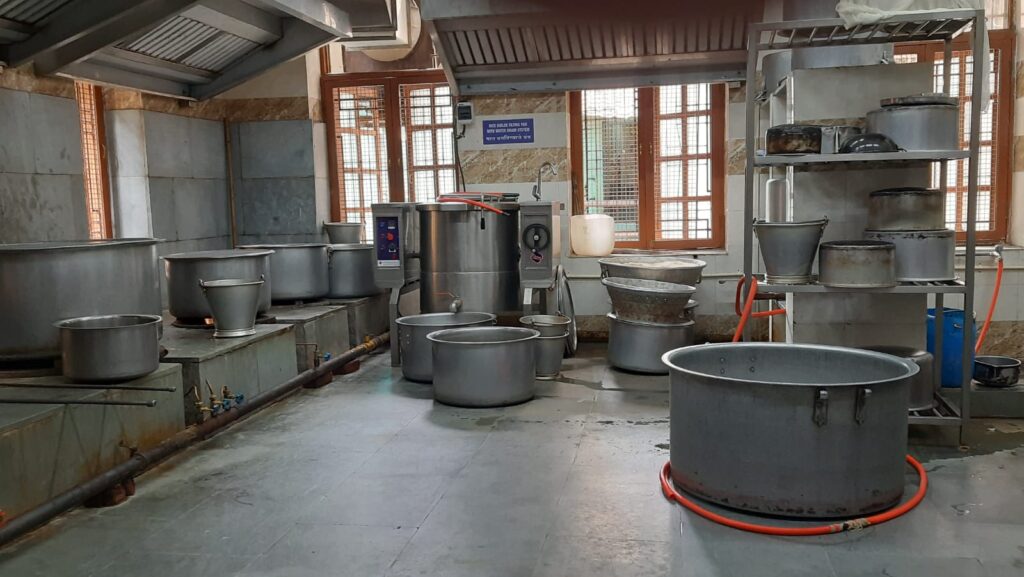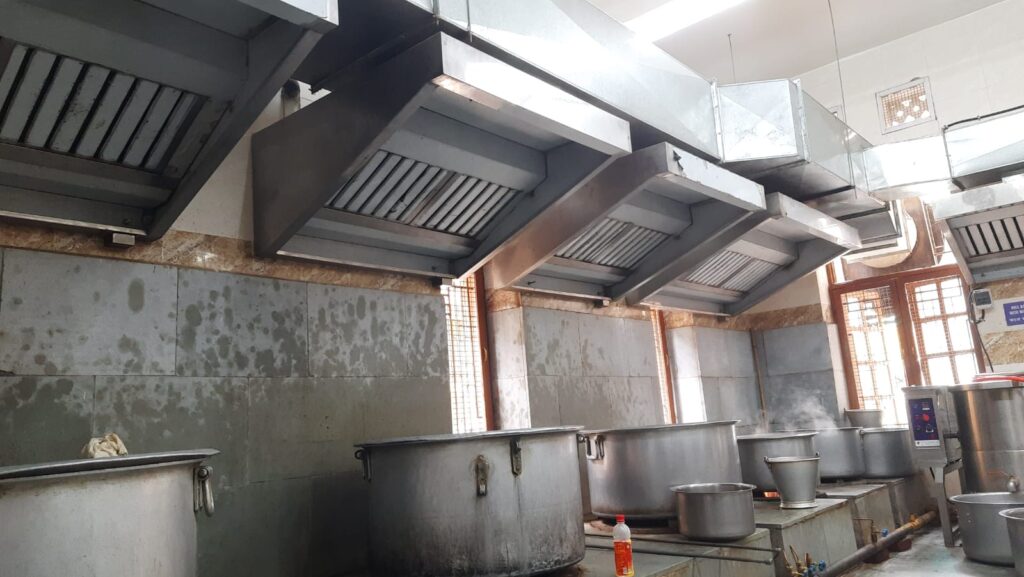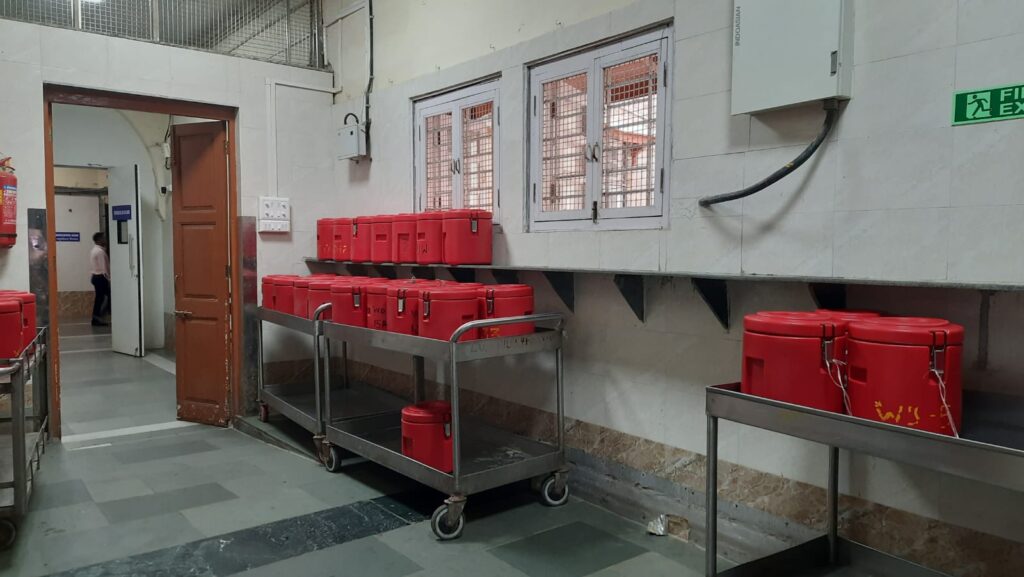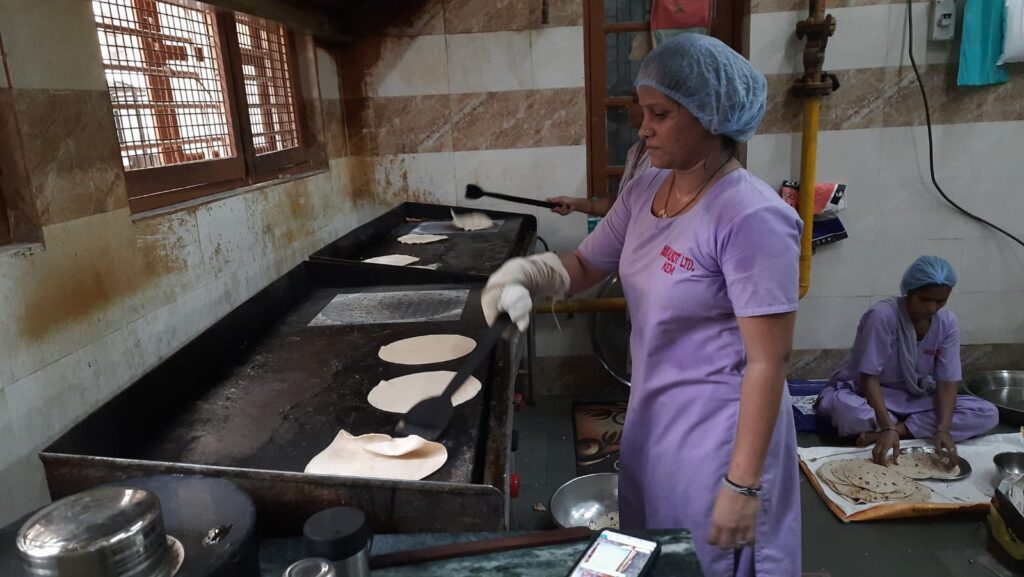1200 chapatis, 45 kgs of rice, 95 kgs of vegetables, and 20 kgs of daal. This is just one meal cooked in the kitchen at KEM hospital every single day. Around 1700-1800 patients are admitted daily and the kitchen provides for their nutrition as they recover from various illnesses.
People are often sceptical about the food provided by public hospitals because of concerns related to hygiene and quality. Especially in a city like Mumbai, thousands of patients visit public hospitals for treatment and are dependent on the facilities provided by the hospitals.
Recently, the authorities at Mumbai’s largest, KEM hospital, revamped their kitchen, complete with installation of machinery with advanced technology that preserves the nutritional value of food.

Modernising the food system
King Edward Memorial Hospital (KEM) started in 1926 is one of the oldest public hospitals in the city. When Dr Sangeeta Rawat, dean of KEM hospital, visited the ISKCON religious group’s kitchen a year ago, she was impressed with how their kitchen incorporated premium machinery to maintain the quality of their food.
“Akshaya Chaitanya (an NGO by ISKCON to serve free food) reached out to me to start food for patients’ relatives. They also proposed that they provide free food for our patients as well. I told them we have our own kitchen and our own staff. I wanted to check the food quality before saying yes for the food for patients’ relatives. After my visit to their kitchen in Byculla, we thought about revamping KEM’s kitchen,” said Dr Sangeeta.
It took few months of planning and around six months to install new machinery like a vegetable cutter, coconut scraper and vegetable washer. Apart from that aluminium vessels were replaced with stainless steel, and exhaust fans with chimneys. They also got new stoves and containers that are used for food distribution in wards. The initiative was supported by the BMC and the approximate expenditure for revamping the kitchen was Rs 35-40 lakh.

“Earlier we had wooden platforms; now it has been transformed into stainless steel platforms. This reduces the possibility of developing bacteria in food, especially during monsoon season. We have also been provided with extra space for storage. Our kitchen used to have exhaust fans earlier, but now chimneys are maintaining clean air in the kitchen,” says Dr Shruti Shettigar Joshi, dietician at the hospital.

At present, 24 workers run the kitchen operations at KEM. “The staff took time to adapt to the new machines. Our cooks have been working at KEM for over 20 years, and it was not that easy for them at first,” said Dr Sangeeta. The hospital requires more staff to manage the equipment and overall smooth functioning of the kitchen.
Read more: Monsoon maladies on the rise, conditions worse than last year
Hygiene and cleanliness
Dr Shruti talks about the importance of hygiene. “It’s not that we didn’t have a washing area earlier, but now we have made a new one, just for the purpose of hand washing so that the sanitation in our kitchen is maintained.”

“Our kitchen duties wrap up around 5 pm in the evening but we make sure to clean every vessel and every machine daily before end of the work day,” says Jayesh Sharadchandra, who has been working with KEM for the last eight years.
The department of diet and nutrition was equally involved in the planning of kitchen renovation, along with engineers, so that their suggestions were incorporated.
Quality control at other public hospitals
When Citizen Matters reached out to a few other government hospitals, most of them were not ready to provide access to check on the condition of the kitchens.
The president of the Indian Dietetic Association (Mumbai Chapter) Dr Zamurrud Patel pointed out, “What KEM has done, is a very welcome move. A large number of people goes to the government hospitals and nutrition plays an extremely important role while dealing with any disease. If we provide good food to the patients, the recovery is faster. I am sure the BMC is thinking of replicating this initiative in other hospitals. Not only the government but also private hospitals should think about taking this up. We don’t know what the kitchens are like in other hospitals.”
This year, the BMC allocated Rs 1680.19 crore for health in its budget.
Dr Zamurrud also said that the ratio of dieticians in any hospital should not be compromised. “We should focus on increasing the number of dieticians in all the hospitals,” she said while emphasising the importance of a well-maintained kitchen.
The Ministry of Health offers certain guidelines of do’s and don’ts that every modern kitchen and dietary service should incorporate.
